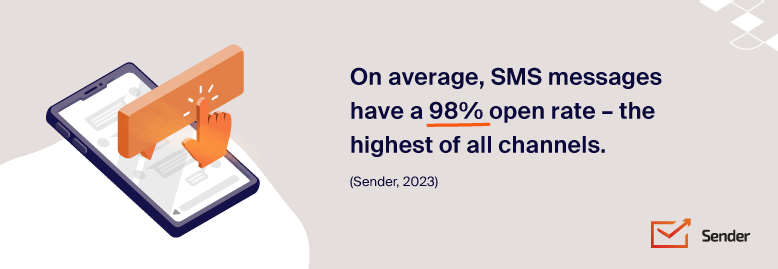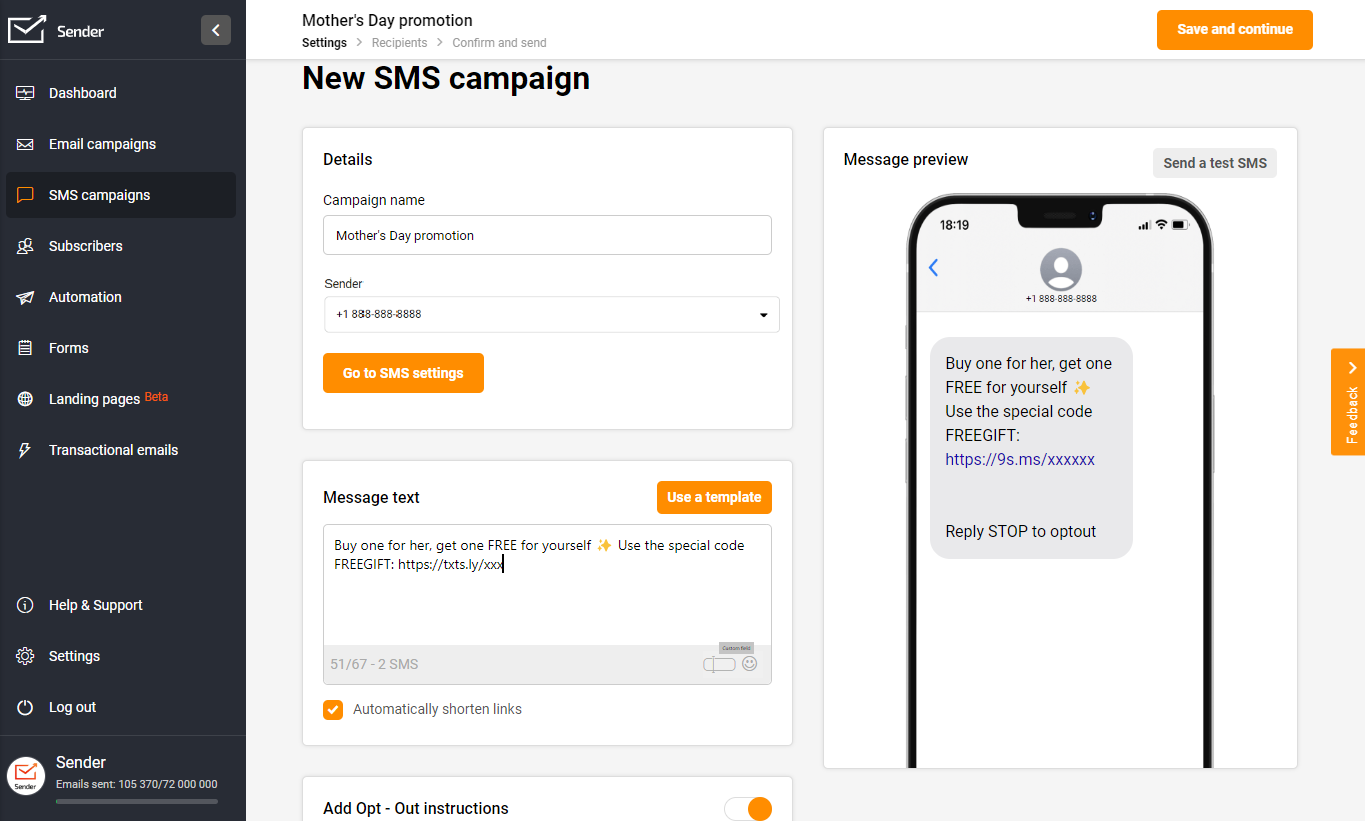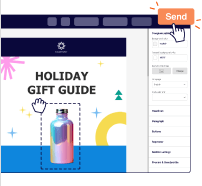Ever sent an SMS campaign and felt like subscribing to a premium plan you didn’t sign up for? That’s what most people think when they first start.
SMS marketing is powerful, fast, and cuts through the noise. But what most businesses don’t realize until it’s too late is how quickly costs can add up. Between carrier fees, message length, and pricing structures that vary wildly across providers, your sms marketing cost can spiral if you’re not careful.
As someone in this industry for a while now, we’ll break down how sms marketing pricing really works in 2025 so you can choose the right plan without overpaying.
Let’s get started.
What is SMS Marketing?
SMS marketing is like opening a direct line to your customer’s attention. You send SMS texts to their phones promoting products or sharing updates. These messages are typically short (under 160 characters) and can bring instant results.
We’ve seen this with multiple brands over time—adding short message service to their marketing strategy increases their engagement and even sales.
Unlike email marketing, which often gets buried in cluttered inboxes, mass texting has near-perfect visibility, with SMS marketing open rates as high as 98%.

Why Do Businesses Use SMS Marketing?
- Speed. Messages are delivered instantly and usually read within minutes;
- Reach. Works even on basic phones—no app download or internet needed;
- Engagement. It’s direct, personal, and feels like a 1-on-1 nudge.
SMS marketing campaigns are used by different businesses for flash sale announcements, abandoned cart nudges, etc. They’re most effective when fast, personal communication is an important factor in driving conversion.
How Much Does SMS Marketing Cost?
The cost of SMS marketing might look confusing at first. But if you understand the factors, you’ll be able to have an approximate range.
Generally, platforms charge based on:
- The number of SMS you want to send;
- The location of your target audience;
- Your message length.
Most platforms charge per message, with rates ranging from $0.015 to $0.05 depending on the country, volume, and message type.
Here’s a quick look at how SMS pricing works on a pay-per-message model with Sender — one of the most affordable SMS platforms for a business.
| Number of SMS | Cost/SMS* |
| 1 | $0.015 |
| 100 | $1.5 |
| 1000 | $15 |
| 5000 | $75 |
* The cost of SMS depends on the location of the audience. This estimate is for a US-based audience.
As you scale, your text campaign cost becomes more predictable — especially when you’re working with flat-rate pricing plans like this. No surprise hidden fees, no inflated carrier charges. Just straightforward, scalable SMS advertising cost.
With Sender, you can organize your SMS and email lists, schedule bulk text campaigns, and send personalized messages that strike just right.

How SMS Marketing Pricing Works?
You must be thinking how this pricing works.
If you analyze the different pricing structures, carrier fees, and what actually counts as one message, things can get a little confusing.
Over the years, we’ve tested several text message marketing platforms and found that no two price their services the same way.
Here’s how the math really works behind the scenes and what you need to watch out for before choosing a SMS plan.
SMS Cost Structure
Before looking into the specific types of costs, you need to understand the cost structure of different tools. Most SMS platforms follow one of three pricing structures:
- Pay-per-message. You’re charged for every SMS text sent. This is straightforward and predictable even for high-volume messaging needs;
- Credit-based plans. Some tools use credits instead of currency. One SMS = one credit (sometimes more, depending on message length or destination). Many platforms offer rollover credits, while some do not. This adds a layer of confusion;
- Monthly plans. These usually offer a set number of messages per month with pricing tiers. Great for consistent text campaigns—just make sure you understand what counts as one message.
Factors Affecting SMS Costs
Before locking in on any plan or provider, you should understand the exact factors that impact the SMS costs.
Even if you pick the cheapest text message marketing platform, real-world sms campaign costs can increase based on a few variables, such as:
- Volume. The more you send, the more you will spend. Most platforms will offer a per SMS cost pricing model;
- Location. A message sent to the US will cost you $0.015, but can cost up to $0.05 for a message sent to your audience in Japan;
- Message length. SMS splits after 160 characters. If you’re sending long updates, you’ll actually pay for 2–3 messages depending on the length.
How Carriers and Platforms Set Their Fee?
This part confuses most users. There are two parties involved in every SMS marketing campaign: the platform (like Sender) and the carrier (like Verizon). So, the costs aren’t just about how many messages you send—it’s also shaped by carrier and platform fees, many of which are easy to miss if you’re not paying attention.
Here are all the factors that might impact the cost of your SMS campaigns:
- Carrier fees. Carriers charge a delivery fee for each message you send. This fee varies based on the destination country, and the message type;
- Phone number registration. If you’re using local numbers or dedicated short codes, expect a fee to verify and activate them;
- 10DLC (10-digit long code) fees. If you use a regular 10-digit business phone number, you’ll need to register it, too. Unregistered numbers can face higher charges or message blocks;
- Platform fees. This includes per-message pricing as well as a monthly subscription to access the SMS marketing features.
- Additional costs. Some providers also charge extra for custom keyword setup (for opt-ins), compliance tools (e.g. TCPA rules), and additional features like MMS messaging or branded sender names.
That’s why it’s important to check not just the price per SMS, but also the full pricing structure — including hidden fees tied to features you actually need.
Key Factors That Influence SMS Marketing Costs
We’ve discussed this before but it’s important to cover it again in the context of business use cases.
You might think your SMS campaign will cost $50 until the final invoice says $120. What happened in between? These factors silently stack up and change the real cost of SMS marketing.
- SMS message length and frequency. One message isn’t always one message. Go beyond 160 characters, and it gets split — and billed — as two or more SMS texts. Add to that frequent sends (like daily reminders or flash sale nudges), and your text message marketing costs can double without warning;
- Geographic reach (local vs. international). Sending messages across borders? Expect a jump in cost. Text messages sent to international numbers often include carrier fees, regulatory charges, and delivery rate markups;
- Additional fees. Some SMS providers add extra costs like setup charges, keyword costs, rental for short codes and 10-digit long codes. These small add-ons can quietly inflate your total spend—especially if you’re running frequent or high-volume messaging campaigns.
SMS Marketing Pricing Models
Understanding how SMS marketing is priced can help you pick a plan that fits your budget and avoid surprise costs.
Here are the most common pricing models used by SMS platforms in 2025:
- Pay-as-you-go pricing. You’re charged for each message you send. It’s flexible and good for occasional SMS campaigns, but can get expensive for high-volume messaging;
- Monthly subscription plans. You pay a fixed monthly cost for a set number of messages plus extra when you need more credits for additional messages. Great for businesses with consistent text campaigns and predictable volumes;
- Flat-rate vs. variable pricing. Some tools offer a simple flat rate per message, while others use variable rates based on destination, message length, or carrier. The latter can make ROI calculations tricky;
- Tiered pricing. Per-message cost drops as your volume increases. Ideal if you’re scaling fast or sending regular SMS blasts;
- Custom plan or enterprise plans. Tailored for large businesses, these plans often include dedicated support, advanced analytics, and bulk messaging discounts. They typically come with higher subscription-based plans.
Each model has its trade-offs. Before choosing, compare the pricing structure, included features, and any hidden fees that could impact your SMS marketing cost.
Average SMS Marketing Costs in 2025
By now you know SMS marketing rates vary widely based on the platform, region, and the length of your SMS.
While some tools look cheap upfront, the real sms campaign cost often comes down to delivery fees, list size, and add-ons like compliance or MMS support.
Here’s a breakdown of the cost of SMS campaigns compared when you use popular text messaging services:
| Provider | SMS blast costs |
| Sender | Starts at $0.005/SMS (US only); SMS credits included with paid plans; free toll free number for US/Canada. |
| Brevo | $0.019/SMS (pay-as-you-go); no monthly plans. |
| SlickText | Starts at $29/month for 500 SMS; includes one keyword and limited short code access. |
| ActiveCampaign | From $16.83/1,000 SMS; SMS available as an add-on to Plus plans and higher. |
| Postscript | Starts at $0.015/SMS; volume-based pricing with support for MMS and Shopify automation. |
Based on the price breakdown above, here’s what you need to remember about different platforms:
- Brevo SMS Pricing. Starts at $0.019 per SMS. Pay only for what you send. Good for low-volume and simple campaigns;
- SlickText Pricing. Starts at $29/month for 500 SMS credits. Includes one keyword, limited short code access and free incoming messages. Ideal for local businesses focused on simple text-only messages;
- ActiveCampaign SMS Pricing. SMS is available as an add-on to email plans. Pricing starts at $16.83 for 1,000 SMS messages, but you must be on a Plus plan or higher. It’s powerful but can feel pricey if you just want SMS;
- Postscript SMS Pricing. Charges are based on message volume, with rates starting at $0.015/SMS with a minimum $30 spend. Plans also include MMS messages and abandoned cart automation, making it a good fit for Shopify brands;
- Sender SMS Pricing. Starts at just $0.005 per message (US). The standard and premium plans include SMS credits equal to the plan’s value, and beyond that, you simply pay per SMS, making it one of the cheapest SMS marketing platforms. Plus, you get a toll free number (TFN) to text customers in the US and Canada upon signing up, no extra registration fees.
Pro Tip: Always check for hidden fees like carrier surcharges, keyword rentals, or 10DLC compliance to save money. They can quietly push your SMS marketing cost per message higher than expected.
SMS Marketing ROI
When done right, SMS marketing delivers one of the highest returns in digital marketing according to SMS marketing statistics.
But tracking ROI isn’t just about revenue. It’s about understanding how much value each text message creates relative to what you spend.
ROI = (Incremental Revenue from SMS Campaign) ÷ Total text message marketing costs / 100
In our experience, simple text-only messages like personalized limited-time offers or cart reminders based on customer data can bring up to 15–25x ROI, especially when sent at the right time or based on past purchase history.
To make it simpler to visualize, let’s take an example:
Let’s say you run a small D2C brand and send messages to 500 customers using a plan that costs $7/month (Sender’s entry-level tier).
Assume:
- Conversion rate: 15% (conservative average for a loyal list)
- Net profit per order: $3
Here’s the math:
((500 contacts × 15% conversion) × $3 profit — $7 cost ) / $7 plan cost × 100 = 3114% ROI
And that’s without factoring in repeat orders or brand recall. For small businesses, such returns from SMS marketing depend on how smartly you pick and use an SMS marketing platform. So, you should look for SMS platforms that offer:
- Automations (like abandoned cart flows);
- Unlimited contacts under one plan;
- Custom pricing plans with volume discounts;
- Built-in compliance tools to reduce opt-outs.
The best part? Sender already offers everything you need—even on its lowest-tier plans.
From automated workflows and abandoned cart SMS to unlimited contacts, built-in compliance tools, and flexible pricing that scales with your business — it’s designed to keep your SMS marketing cost per message low and your ROI high.
If you’re ready to get more out of every message, get started now.






